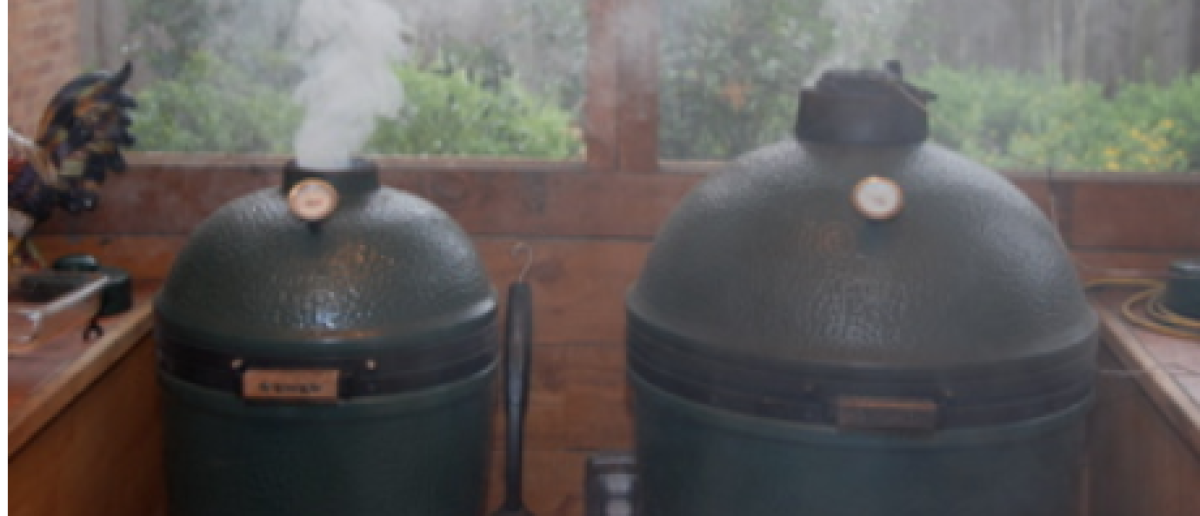Jana purchased some boneless, center-cut pork chops from Sam’s Club, so tonight I decided to grill them using a flavor brine. My simplistic explanation: The salt in a brine is more concentrated than the salt in the meat so initially water flows out of the meat into the brine solution to attempt to balance the salt concentrations. After 30 minutes or so, this process reverses itself, with the water and salt going back into the meat. The salt breaks protein bonds in the meat, capturing water molecules within the proteins and increasing the moisture content of the meat. Any flavors added to the brine will enter the meat along with the salt, infusing flavor into the depths of the meat.
I made a 5% brine solution plus I added 1 tablespoon of Cluck and Squeal’s All Purpose Rub as the flavor. I kept the pork chops in the brine in the refrigerator for about 2 hours, before removing and briefly rinsing under running water to remove any excess salt. I dried them, added a light coating olive oil on all sides and dusted liberally with the same rub that was in the brine solution.

I wanted a smoky, slow initial cook, with a quick finishing sear at the end. I got a good fire going in my large BGE with a platesetter in place and a foil drip pan on it. I added a couple of handfuls of dry cherry chips and smoked the chops until their internal temp was about 118-120*.
I removed chops and the platesetter, added 2 panels of my Grill Grates and got the dome temp up to 400*. I then seared the chops about 90 sec. on each side, then I held them with tongs while I seared the fat along the edges.

They were very juicy and one could taste the flavor throughout the whole chop. Delicious!!

Here are colorful pictures of Jana’s mixed, oven-roasted veggies, including our garden squash, and her tasty sautéed Asian green beans.

A little black rice finished off the meal!

Enjoy,
Misippi Egger
(Clark Ethridge)
**********
Ingredients:
2 center-cut, boneless pork chops (a least an inch thick)
50 gm Morton Kosher salt
1 T Favorite rub
800 ml water
Olive oil
Instructions:
(1) Make a 5% (6% if using non-metric measures) brine solution. Add 50 gm Morton Kosher salt and 1 tablespoon of rub to 800 ml water. Mix with a whisp until all the salt is dissolved, then add ice until the volume equals 1 liter. Pour this into a ziplock bag with the pork chops and place in the refrigerator for at least an hour or up to overnight. (For non-metric measures, use 1/4 c Morton Kosher salt, 1 T rub, and 3.5 quarts of water. When mixed well, add ice to a total volume of 4 quarts (6% solution).
(2) Remove the chops from the brine and rinse briefly under running water to remove some of the salt. Dry them well, then coat all sides with olive oil. Apply rub to both sides of the chops and allow sit at room temp while getting the fire ready.
(3) Prepare a low-temp (250-300*) indirect fire. Add any preferred wood chips then the chops. Cook until they reach an internal temp of 118-120*. Remove the chops, convert the fire to a direct, hot fire for searing (400-500*). Sear the chops for abut 90 sec. per side, then using tongs and gloves, sear the fat edge of each chop.
(4) Remove and rest for 5-10 minutes before serving.






